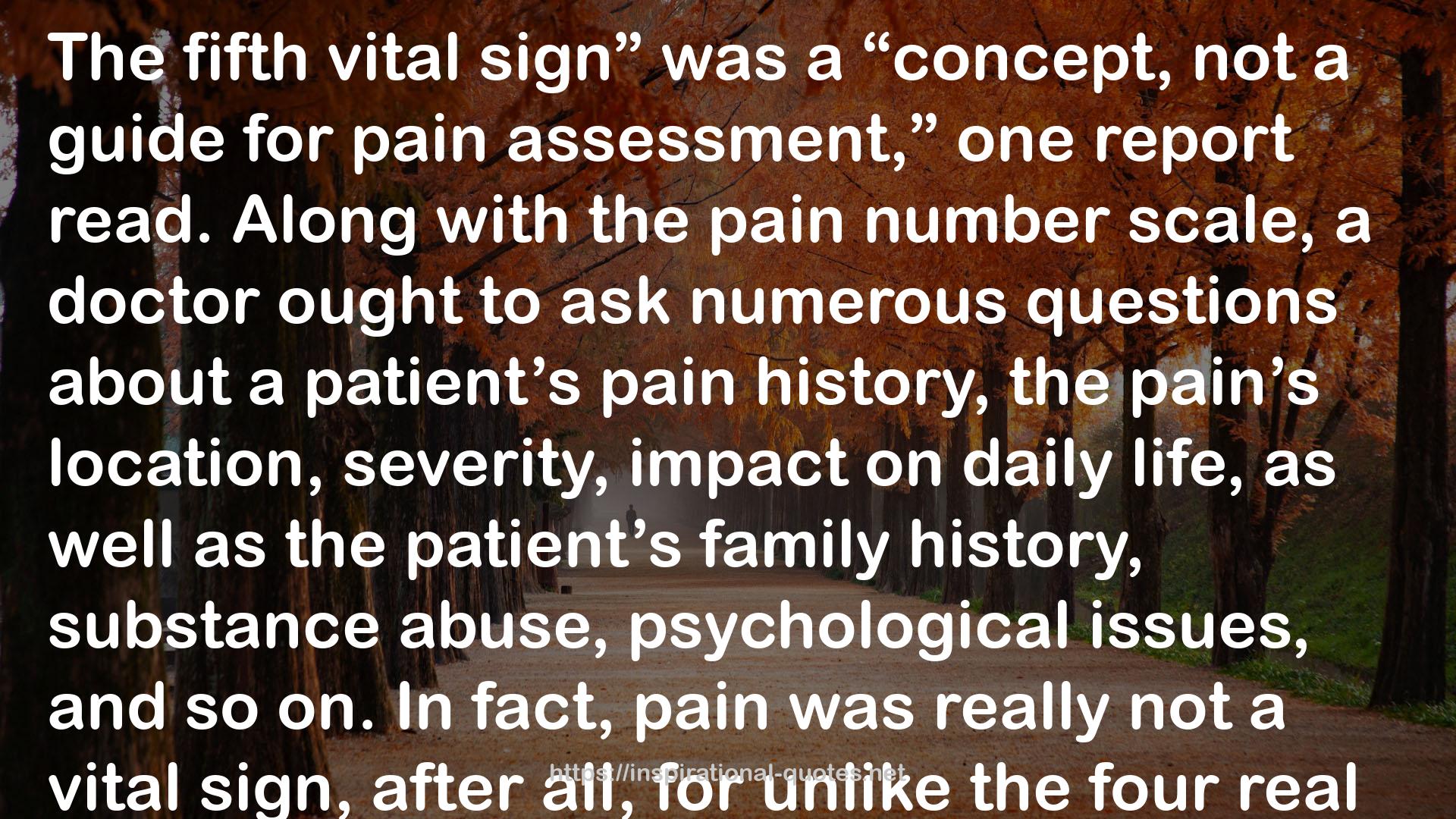" The fifth vital sign” was a “concept, not a guide for pain assessment,” one report read. Along with the pain number scale, a doctor ought to ask numerous questions about a patient’s pain history, the pain’s location, severity, impact on daily life, as well as the patient’s family history, substance abuse, psychological issues, and so on. In fact, pain was really not a vital sign, after all, for unlike the four real vital signs it cannot be measured objectively and with exactitude. The National Pharmaceutical Council advised that “the manner in which information is elicited from the patient is important. Ideally, the clinician should afford ample time, let the patient tell the story in his or her own words, and ask open-ended questions.” Time was the key. Chronic-pain patients took more time than most to diagnose. Problem was doctors had less time. Just as patient rights were emphasized and surveys were circulating asking them to judge their doctors’ performance, patients were in fact losing their most precious medical commodity: time with their doctors. "
― Sam Quinones , Dreamland: The True Tale of America's Opiate Epidemic
